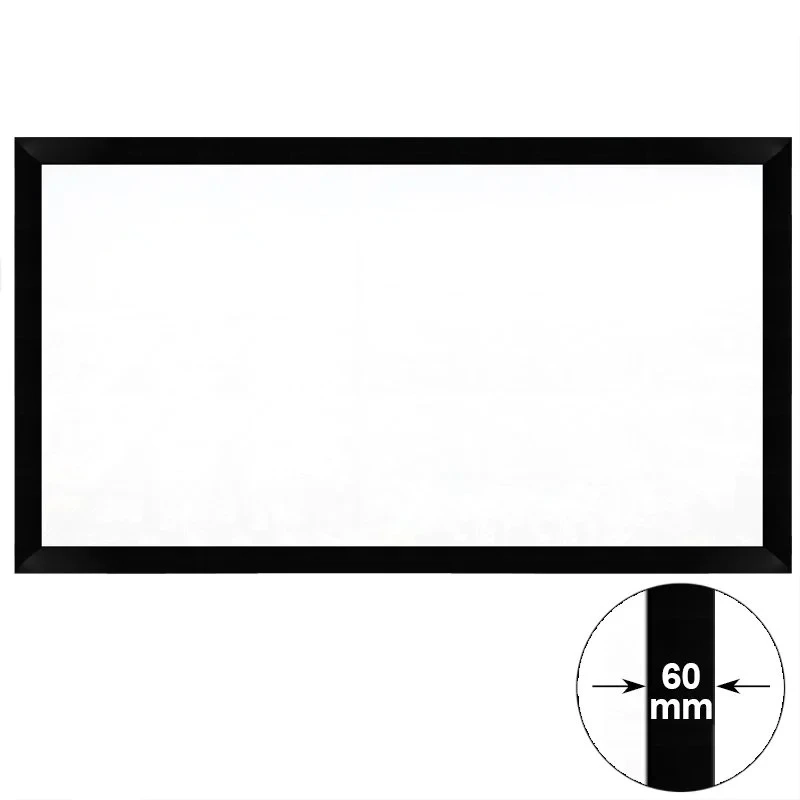A Projection Screen is an installation that consists of a projection surface and a supporting structure that displays an image to an audience. It is often used to display movie trailers, commercials, and other presentations. There are many types of screens available to fit almost any need, from classrooms to large-scale productions.
Fixed-frame
A Fixed Frame Projection Screen will help you to view films in the best possible quality. Although you can project straight onto the wall, the image quality will not be very good. This is why it is important to use a dedicated projection screen. However, if you don't have a budget for a professional screen, you can choose a 'universal' screen from a third party.
Fixed-frame projection screens are usually smaller and lighter than motorized screens. They are easy to mount and can be installed on any wall space. They are also ideal for rear projection. The perforations on these screens allow you to install your audio system without affecting the picture quality.
Retractable
Retractable projection screens are typically made of fabric or vinyl. They are deployed by a roller in the housing and extend to the proper viewing level. The ideal viewing level is determined by the angle of view. This will help avoid neck and eye strain while viewing a projected image. Additionally, a retractable screen can be stored easily when not in use.
Retractable projection screens are a great option for a variety of applications. Large venues may require the projection screen to be lowered from the ceiling. However, retractable screens are attached to a large drop of black fabric. This fabric can be unsightly and detract from the decor of the room. In addition, it may wrinkle during retraction.
Inflatable
If you're planning to have a movie night at home, you'll want to invest in an inflatable projection screen. These are sturdy enough to withstand large crowds and can be easily transported from one place to another. You can use them as a home cinema or even as an outdoor movie screen. If you're planning to use one outside, you should choose one with ropes or yard stakes so it can stay in place even in windy weather.
An inflatable projection screen can be easily transported and is a lot cheaper than a stand-alone screen. They also provide better picture quality than a traditional movie theater screen. When choosing an inflatable movie screen, make sure to read reviews and compare different brands. You should choose the one with the best ratings and follow the instructions provided by the manufacturer.
Mat white
A projection screen that is matte white is a good choice for many applications. This material disperses light uniformly and has a balanced screen gain of 1.1. It is also compatible with High Frame Rates (HFR) projectors. The longevity of a matte white screen is also long, compared to other types of projection screens.
The best projection screen material is matte white. This type of screen is versatile and provides the best image quality. It is also durable and flame retardant. Moreover, it has a black velvet aluminum frame that is easy to assemble.
Glass bead
The glass bead projection screen is a popular choice for use with rear projection TVs. It is made up of many small beads that are placed on a canvas backing. This screen is very similar to the lenticular screens, which feature many tiny cylindrical lenses. They both reflect light from the rear projection screen in a specific direction.
Glass bead projection screens are very effective at transmitting light to the rear of the screen, giving the image a brighter image than a matte white screen. This screen is also better suited for projectors with low brightness or bright ambient light. You can even build a simple screen from home using a blank wall and cheap materials. The screen will be highly reflective and will also work well outdoors.
Lenticular
A lenticular projection screen has multiple concave lenses and a reflective material. The material can be rolled up for transportation or laminated on a substrate. The resulting lenticular projection screen has a non-uniform brightness. An example device for making a lenticular projection screen is shown in FIG. 3.
A lenticular projection screen can be made with a rigid backing mount. It may have a tongue and groove mating arrangement or a post and hole mating arrangement. It can also be offered in various sizes.
0
0


